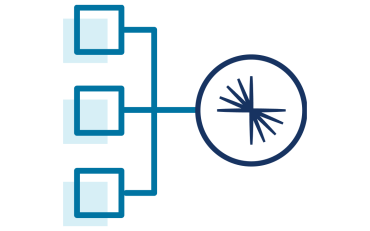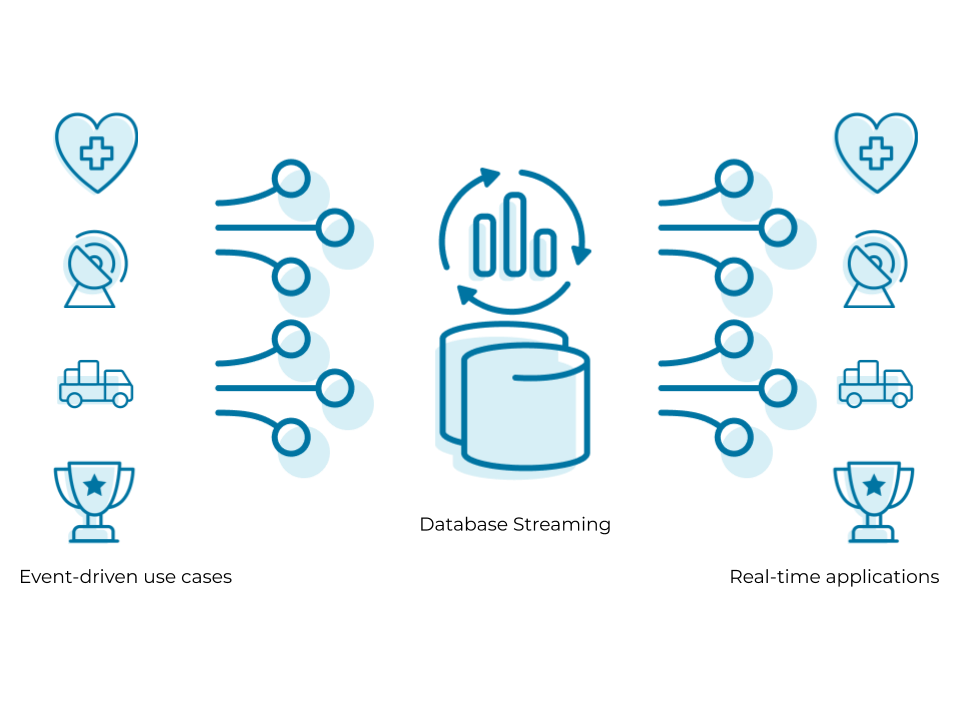Streams Ingests and Continuously Analyzes Data
Streaming Data: How it Works, Benefits, and Use Cases
The world generates an unfathomable amount of data every minute of every day, and it continues to multiply at a staggering rate. Companies in every industry are quickly shifting from batch processing to real-time data streams to keep up with modern business requirements. In this article, we'll cover what streaming data is, how it works, benefits and use cases, and data streaming platforms that help organizations leverage real-time data.

Streaming Data - Overview
What is Streaming Data?
Also known as event stream processing, streaming data is the continuous flow of data generated by various sources. By using stream processing technology, data streams can be processed, stored, analyzed, and acted upon as it's generated in real-time.
What is Streaming?
The term "streaming" is used to describe continuous, never-ending data streams with no beginning or end, that provide a constant feed of data that can be utilized/acted upon without needing to be downloaded first.
Similarly, data streams are generated by all types of sources, in various formats and volumes. From applications, networking devices, and server log files, to website activity, banking transactions, and location data, they can all be aggregated to seamlessly gather real-time information and analytics from a single source of truth.
How Streaming Data Works - Overview, Examples, and Architecture

In previous years, legacy infrastructure was much more structured because it only had a handful of sources that generated data. The entire system could be architected in a way to specify and unify the data and data structures. With the advent of stream processing systems, the way we process data has changed significantly to keep up with modern requirements.
Overview of Stream Data Processing
Today's data is generated by an infinite amount of sources - IoT sensors, servers, security logs, applications, or internal/external systems. It's almost impossible to regulate structure, data integrity, or control the volume or velocity of the data generated.
While traditional solutions are built to ingest, process, and structure data before it can be acted upon, streaming data architecture adds the ability to consume, persist to storage, enrich, and analyze data in motion.
As such, applications working with data streams will always require two main functions: storage and processing. Storage must be able to record large streams of data in a way that is sequential and consistent. Processing must be able to interact with storage, consume, analyze and run computation on the data.
This also brings up additional challenges and considerations when working with legacy databases or systems. Many platforms and tools are now available to help companies build streaming data applications.
Examples
Some real-life examples of streaming data include use cases in every industry, including real-time stock trades, up-to-the-minute retail inventory management, social media feeds, multiplayer game interactions, and ride-sharing apps.
For example, when a passenger calls Lyft, real-time streams of data join together to create a seamless user experience. Through this data, the application pieces together real-time location tracking, traffic stats, pricing, and real-time traffic data to simultaneously match the rider with the best possible driver, calculate pricing, and estimate time to destination based on both real-time and historical data.
In this sense, streaming data is the first step for any data-driven organization, fueling big data ingestion, integration, and real-time analytics.
Batch Processing vs Real-Time Streams
Batch data processing methods require data to be downloaded as batches before it can be processed, stored, or analyzed, whereas streaming data flows in continuously, allowing that data to be processed simultaneously, in real-time the second it's generated.
Today, data arrives naturally as never ending streams of events. This data comes in all volumes, formats, from various locations and cloud, on-premises, or hybrid cloud.
With the complexity of today's modern requirements, legacy data processing methods have become obsolete for most use cases, as it can only process data as groups of transactions collected over time. Modern organizations need to act on up-to-the-millisecond data, before the data becomes stale. This continuous data offers numerous advantages that are transforming the way businesses run.
Benefits & Use Cases
Benefits of Streaming Data
Data collection is only one piece of the puzzle. Today's enterprise businesses simply cannot wait for data to be processed in batch form. Instead, everything from fraud detection and stock market platforms, to ride share apps and e-commerce websites rely on real-time data streams.
Paired with streaming data, applications evolve to not only integrate data, but process, filter, analyze, and react to that data in real-time, as it's received. This opens a new plethora of use cases such as real-time fraud detection, Netflix recommendations, or a seamless shopping experience across multiple devices that updates as you shop.
In short, any industry that deals with big data, can benefit from continuous, real-time data will benefit from this technology.
Use Cases
Stream processing systems like Apache Kafka and Confluent bring real-time data and analytics to life. While there are use cases for data streaming in every industry, this ability to integrate, analyze, troubleshoot, and/or predict data in real-time, at massive scale, opens up new use cases. Not only can organizations use past data or batch data in storage, but gain valuable insights on data in motion.
Typical uses cases include:
- Location data
- Fraud detection
- Real-time stock trades
- Marketing, sales, and business analytics
- Customer/user activity
- Monitoring and reporting on internal IT systems
- Log Monitoring: Troubleshooting systems, servers, devices, and more
- SIEM (Security Information and Event Management): analyzing logs and real-time event data for monitoring, metrics, and threat detection
- Retail/warehouse inventory: inventory management across all channels and locations, and providing a seamless user experience across all devices
- Ride share matching: Combining location, user, and pricing data for predictive analytics - matching riders with the best drivers in term of proximity, destination, pricing, and wait times
- Machine learning and A.I.: By combining past and present data for one central nervous system,
- predictive analytics bring new possibilities.
As long as there is any type of data to be processed, stored, or analyzed, a stream processing system like Apache Kafka can help leverage your data to produce numerous use cases. It's open source software that anyone can use for free.
If you don't have the manpower or expertise to build your own stream processing applications, Confluent makes it easy to get started with virtually any type of data without the hassle of building, configuring, or managing your own applications.
Challenges Building Data Streaming Applications
Top Challenges Building Real-Time Applications
Scalability: When system failures happen, log data coming from each device could increase from being sent a rate of kilobits per second to megabits per second and aggregated to be gigabits per second. Adding more capacity, resources and servers as applications scale happens instantly, exponentially increasing the amount of raw data generated. Designing applications to scale is crucial in working with streaming data.
Ordering: It is not trivial to determine the sequence of data in the data stream and very important in many applications. A chat or conversation wouldn't make sense out of order. When developers debug an issue by looking an aggregated log view, it's crucial that each line is in order. There are often discrepancies between the order of the generated data packet to the order in which it reaches the destination. There are also often discrepancies in timestamps and clocks of the devices generating data. When analyzing data streams, applications must be aware of its assumptions on ACID transactions.
Consistency and Durability: Data consistency and data access is always a hard problem in data stream processing. The data read at any given time could already be modified and stale in another data centre in another part of the world. Data durability is also a challenge when working with data streams on the cloud.
Fault Tolerance & Data Guarantees: these are important considerations when working with data, stream processing, or any distributed systems. With data coming from numerous sources, locations, and in varying formats and volumes, can your system prevent disruptions from a single point of failure? Can it store streams of data with high availability and durability?
How Confluent Empowers the Fortune 100 with Real-Time Data
To win in today's digital-first world, businesses must deliver exceptional customer experiences and data-driven, backend operations.
By integrating historical and real-time data into a single, central source of truth, Confluent makes it easy to react, respond, and adapt to continuous, ever-changing data in real time. Built by the original creators of Apache Kafka, Confluent unleashes an entirely new category of modern, event-driven applications, gain a universal data pipeline, and unlock powerful, data-driven use cases with enterprise scalability, security, and performance.
Used by Walmart, Expedia, and Bank of America, today, Confluent is the only complete data streaming platform designed to stream data across any cloud, at any scale.
Get started in minutes with a free trial. New users get a free $400 credit to use with no credit card required.
Source: https://www.confluent.io/learn/data-streaming/
0 Response to "Streams Ingests and Continuously Analyzes Data"
Post a Comment